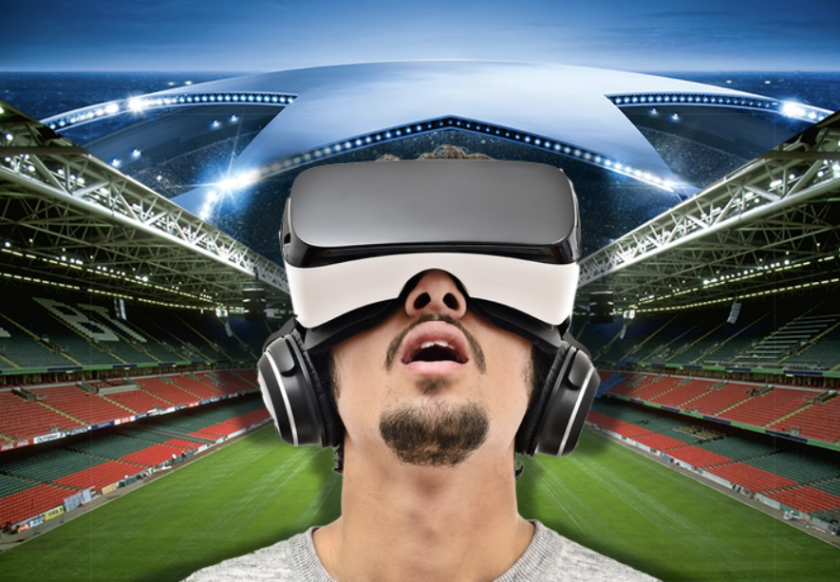Football and video games have been two beloved pastimes that have significantly shaped the entertainment landscape for decades. The fusion of these two worlds has given rise to a captivating journey through the virtual realms of the beautiful game. This article delves into the evolution of football video games and explores how cultural phenomena like Fortnite have revolutionized the gaming and sports crossover.
The Emergence of Football Video Games
The roots of football video games can be traced back to the early days of gaming. Simple, pixelated graphics and limited gameplay were the hallmarks of these pioneering titles. One of the earliest and most influential football games was “Tecmo Bowl,” released in 1987. While basic by today’s standards, it laid the foundation for the future of football gaming.
As technology advanced, so did football video games. The 16-bit era brought iconic titles like “Sensible Soccer” and “ISS Pro Evolution Soccer,” which gained a loyal following for their smooth gameplay and innovative features. However, it was the release of “FIFA International Soccer” in 1993 that proved to be a turning point. Developed by EA Sports, this game marked the beginning of the highly successful FIFA franchise, setting new standards for realism and playability.
The Rise of 3D Realism
With the advent of 3D graphics in the late 1990s, football video games underwent a transformational leap. The transition from 2D to 3D visuals brought games like “FIFA 3D Football” and “Pro Evolution Soccer 3D” to life. Players could now experience the excitement of football with enhanced graphics, player models, and realistic stadiums.
As the new millennium dawned, football gaming evolved further. Titles like “FIFA World Cup 2002” and “Pro Evolution Soccer 5” introduced advanced gameplay mechanics, precise ball control, and strategic tactics, immersing gamers deeper into the sport they loved. These improvements resonated with both casual players and hardcore football fans, elevating the popularity of football video games to unprecedented heights.
The Cultural Phenomenon of Fortnite
In recent years, video games have seen a cultural phenomenon with the rise of Fortnite. Developed by Epic Games and released in 2017, Fortnite quickly became a global sensation. The game’s unique blend of battle royale gameplay, building mechanics, and regular updates captured the attention of millions of players worldwide.
However, it wasn’t just the gameplay that set Fortnite apart; it was the integration of popular culture elements. The game’s emotes, which are dance moves that players’ avatars can perform, became an iconic part of the Fortnite experience. The “Floss,” “Take the L,” and “Orange Justice” dances are just a few examples that went viral, transcending the gaming community and becoming mainstream pop culture phenomena.
Football Meets Fortnite
Recognizing the potential of bridging sports and gaming, Fortnite started collaborating with football organizations and players. In 2018, during the FIFA World Cup, Epic Games introduced soccer-themed skins, emotes, and challenges. Players could dress up their avatars in the jerseys of their favorite national teams, celebrate goals with iconic emotes, and complete in-game tasks related to the World Cup.
The collaboration extended beyond aesthetics and emotes. Renowned football stars, including Cristiano Ronaldo and Neymar Jr., made virtual appearances in Fortnite. This convergence between real-world athletes and the gaming universe showcased the power of video games in connecting players with their sports idols.
The Impact on the Gaming Community
The integration of football into Fortnite and other video games has had a profound impact on the gaming community. It has attracted new audiences to both football and gaming, bringing sports enthusiasts and gamers together in a shared experience. By the way, If are looking to improve your Fortnite gaming skills, you can use Fortnite aimbot. This crossover has also opened up opportunities for football clubs and leagues to engage with younger audiences and expand their global reach.
Furthermore, the success of collaborations between sports and video games has paved the way for other crossovers. Various games have followed suit, integrating elements from different sports and entertainment sectors. This trend has proven to be a win-win for all parties involved, showcasing the power of synergy between diverse industries.
Conclusion
Football’s journey through video games has been a remarkable evolution, from its humble beginnings to the immersive, realistic experiences of today. Alongside this evolution, cultural phenomena like Fortnite have demonstrated the transformative impact of video games on popular culture. By intertwining the world of football with the gaming universe, Fortnite has brought joy to millions while propelling the sports-gaming crossover to new heights. As technology continues to advance and gaming becomes even more ingrained in society, the journey of football through video games promises to be an ever-exciting and engaging adventure. Game onside, indeed!

Sports journalist, content writer and passionate football lover.









